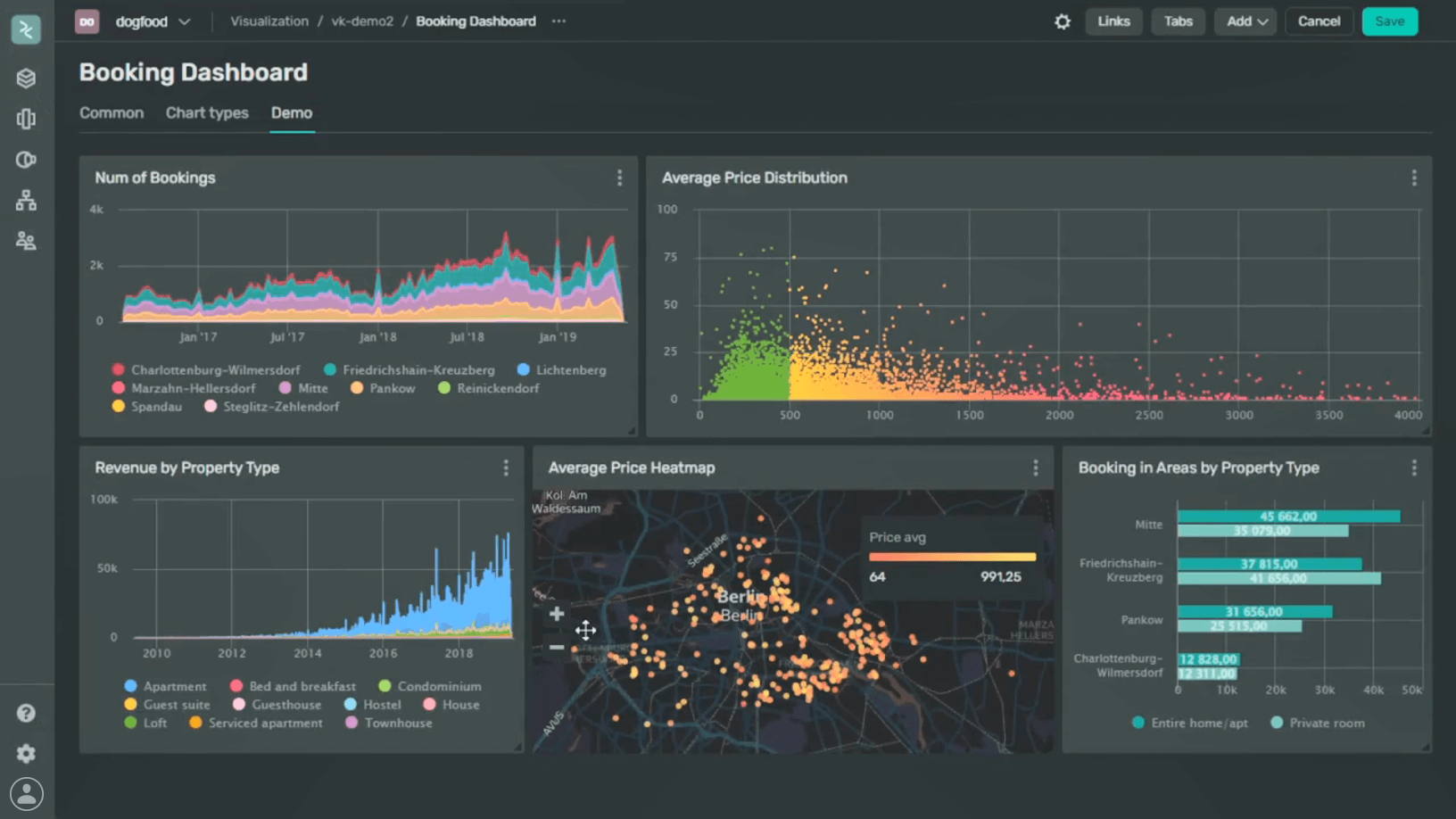DoubleCloud DBaaS sample visualization

What is DBaaS and why is it so valuable?
Ever wondered what DBaaS means and what it’s there for?
Definition of DBaaS
DBaaS is a short form of “Database-as-a-Service, ” a cloud computing service model that lets users utilize a cloud database without setting up physical hardware, installing software, or configuring the database.
The cloud provider manages everything from periodic updates and upgrades to backups, enabling users to benefit from the service much more quickly.
Now we’ve some idea of what DBaaS is, we can dive a little deeper into how it appeared, how it works, and why you should be utilizing one.
DBaaS now
The history of DBaaS isn’t as long as other cloud database services such as IaaS, PaaS, and SaaS but it’s growing incredibly quickly, winning more and more users’ hearts every day.
In the beginning, databases only ever had a self-service interface for provisioning and managing them but time passed and the market changed, demanding more automation and easier solutions, so DBaaS started to provide turnkey solutions for running cloud databases.
Overtime, DBaaS started to acquire more and more useful features like data backup and recovery, automated database management, and so on. And according to a recent study, 75% of databases will be migrated to the cloud by the end of 2022.
It means that the DBaaS popularity and value will only continue to grow, and we should benefit from it the sooner the better.
How DBaaS works
Database-as-a-Service is delivered online, so you access your database through a web interface or API. It means you don’t have to worry about administrative tasks that take a lot of time and you can just focus on other things that are important for your business.
DBaaS providers do all the maintenance and usually offer analytics, monitoring, and 24/7 support. Some, like ourselves, also allow you to visualize data, not only aggregate, store, and transfer it.

For instance, to get the above kind of visualization, you just need to complete three basic steps:
- Create a cluster and a database for data storage.
- Transfer the data from the outside source to your DoubleCloud cluster.
- Analyze the data using Visualization, the built-in BI tool.
After the job of uploading all your data is finished, a DBaaS engine will kick in in a very similar fashion to an on-prem setup, meaning there shouldn’t be a noticeable difference… that difference is there though.
On Public-Infrastructure-as-a-Service cloud environments such as Azure, AWS or Google Cloud, the database engine is run on a shared hardware platform, adding to the compute power, resource elasticity, and scalability needed to support your growing data stores and processing needs.
Benefits of DBaaS
One of the main benefits of DBaaS is that it helps reduce the complexity and cost of the managing process.
Data is the most important thing for any business.
That’s why DBaaS is likely to become an essential part of companies’ IT infrastructure.
But why exactly should you move to a DBaaS?
Well there are operational, financial, and strategic benefits…
- Cost Savings: Saving money is what every business strives for. Using DBaaS, one can save money on equipment, electricity, etc. The user doesn’t need to spend money on database servers or plan for hardware upgrades. The periodic charge is set based on the consumed resources, so one always knows the cost and can purchase additional capacity only if it’s needed, not just in case.
- Rapid Database Development: Compared to on-premises databases, a cloud database can be configured and integrated with the product in minutes, really hastening the time-to-market.
- Simpler Management: As it was said earlier, DBaaS providers take care of everything. The administration burdens lay on them, so your employees can work only on the product itself without thinking of the database infrastructure in the background.
- Flexibility & Scalability: The infrastructure that supports the database can be elastically scaled up or down if need be. The cloud database model offers unlimited growth potential without any upfront investment.
- Security: Cloud database providers typically offer enterprise-grade security with data encryption. Not every company is ready to do the same with their local databases.
- Reduced Risk: Service-level agreement that DBaaS providers offer guarantees users a certain amount of uptime, so the users are protected.
DBaaS use cases
Who uses DBaaS, and what for?
DBaaS are suitable for anyone needing a database but wants to delegate control of its configuration and management to a specialist or for anyone who has security concerns or just wants to save money.
When we store all the data in the cloud, a DBaaS facilitates access to it for people from one team. It helps collect and use data quickly to make decisions based on it, working together seamlessly, which is essential in times when remote work is something that we can’t live without.
In this article, we’ll talk about:
Start your trial today


